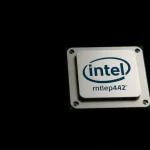Apple iPhone Air Performs Well in the Used Phone Market

The market for used smartphones is always in flux, but recent trends suggest that the Apple iPhone Air is defying expectations and maintaining a surprisingly robust presence. Despite facing significant criticism, this model is standing its ground against the more premium offerings in Apple's lineup, notably the iPhone Pro Max. But what does this mean for consumers and the future of the iPhone Air?
- Market performance of the iPhone Air versus iPhone Pro Max
- Factors contributing to the iPhone Air's resilience in resale value
- Why are consumers boycotting the new iPhone 16?
- Generational trends: Why is Gen Z obsessed with iPhones?
- Is Apple losing iPhone users?
- What iPhones will no longer work in 2025?
Market performance of the iPhone Air versus iPhone Pro Max
According to data from SellCell, a popular platform for trading in used devices, the iPhone Air has managed to hold its resale value impressively well when compared to the iPhone Pro Max. This comparison is crucial for potential buyers looking to understand the value retention of these devices in the used market.
To achieve a fair comparison, several key parameters were considered:
- Both devices were compared in their 256GB storage configurations.
- Only units in mint condition were selected for assessment.
- The highest available price quotes were used for both models.
The findings reveal that the iPhone Air currently commands a resale price of approximately $671, while the iPhone Pro Max is priced at around $827. It's important to note that the iPhone Air has an initial retail price of $999, compared to $1,199 for the Pro Max variant.
This pricing translates into a depreciation of 32.8% for the iPhone Air and 31% for the iPhone Pro Max. Remarkably, the resale price difference between these two models is a mere 2%, which is particularly noteworthy given the recent negative publicity surrounding the iPhone Air.
Factors contributing to the iPhone Air's resilience in resale value
Several factors could explain the iPhone Air's ability to maintain its resale value despite the surrounding criticism:
- Brand loyalty: Apple's longstanding reputation for quality and innovation may encourage users to continue investing in their products.
- Perceived value: The iPhone Air, positioned as a more affordable alternative, might attract buyers looking for a premium experience without the high price tag.
- Market demand fluctuations: Even amid negative reports, there can be fluctuations in demand that positively affect the resale market.
Interestingly, reports from various industry analysts, including Ming-Chi Kuo, indicate that Apple is actively reconsidering its production strategies. Kuo suggested that the company is asking suppliers to reduce component production for the iPhone Air by up to 80%. This decision reflects a complex relationship between demand and supply within Apple's product ecosystem.
Why are consumers boycotting the new iPhone 16?
Amidst the discussions about the iPhone Air, the launch of the iPhone 16 has also faced scrutiny. Many consumers have expressed their discontent, leading to calls for a boycott. The primary reasons for this backlash include:
- Price point: Many feel that the price of the iPhone 16 does not justify its incremental upgrades compared to previous models.
- Environmental concerns: Apple has faced criticism regarding its environmental impact and sustainability practices.
- Software issues: Users have reported bugs and glitches in the latest operating system, leading to frustration with the new device.
These factors collectively contribute to a growing sentiment against the iPhone 16, which may inadvertently affect the resale market for previous models, including the iPhone Air.
Generational trends: Why is Gen Z obsessed with iPhones?
Another interesting aspect of the iPhone's market presence is its popularity among younger consumers, particularly Generation Z. Several factors contribute to this obsession:
- Social media integration: The iPhone's camera capabilities and editing features align perfectly with Gen Z's focus on social media content creation.
- Brand image: Apple is often viewed as a status symbol, and owning an iPhone can enhance one's social standing among peers.
- Innovative technology: Features such as FaceID and the seamless integration of hardware and software create a user-friendly experience that resonates with younger users.
As this generation continues to influence market trends, their preferences will play a crucial role in shaping the future of Apple products.
Is Apple losing iPhone users?
Despite the apparent strength of the iPhone Air and the loyalty of certain consumer segments, there are indications that Apple may be losing some iPhone users. Factors contributing to this trend include:
- Competition: The rise of competitors offering high-quality smartphones at lower price points has made it easier for users to switch brands.
- Consumer expectations: As technology evolves, consumers are increasingly expecting innovation and unique features, which can lead to dissatisfaction if these are not met.
- Economic factors: Economic downturns may prompt consumers to reconsider their spending habits, leading to a decrease in new iPhone purchases.
This potential loss of users is a significant concern for Apple, particularly as they prepare for future product releases.
What iPhones will no longer work in 2025?
Looking ahead, it's crucial to consider the longevity of existing iPhone models. By 2025, several models may no longer receive software updates or support:
- iPhone 6s and 6s Plus
- iPhone SE (1st generation)
- iPhone 7 and 7 Plus
As Apple continues to push forward with new technology and features, older models may become obsolete, pushing users towards newer offerings like the iPhone Air and iPhone 16.
In conclusion, the iPhone Air's resilience in the used phone market is a testament to Apple's brand strength, even amid challenges. As the smartphone landscape evolves, understanding these dynamics will be essential for consumers navigating their options.
For a deeper understanding of the iPhone Air, consider watching this insightful review:




Leave a Reply